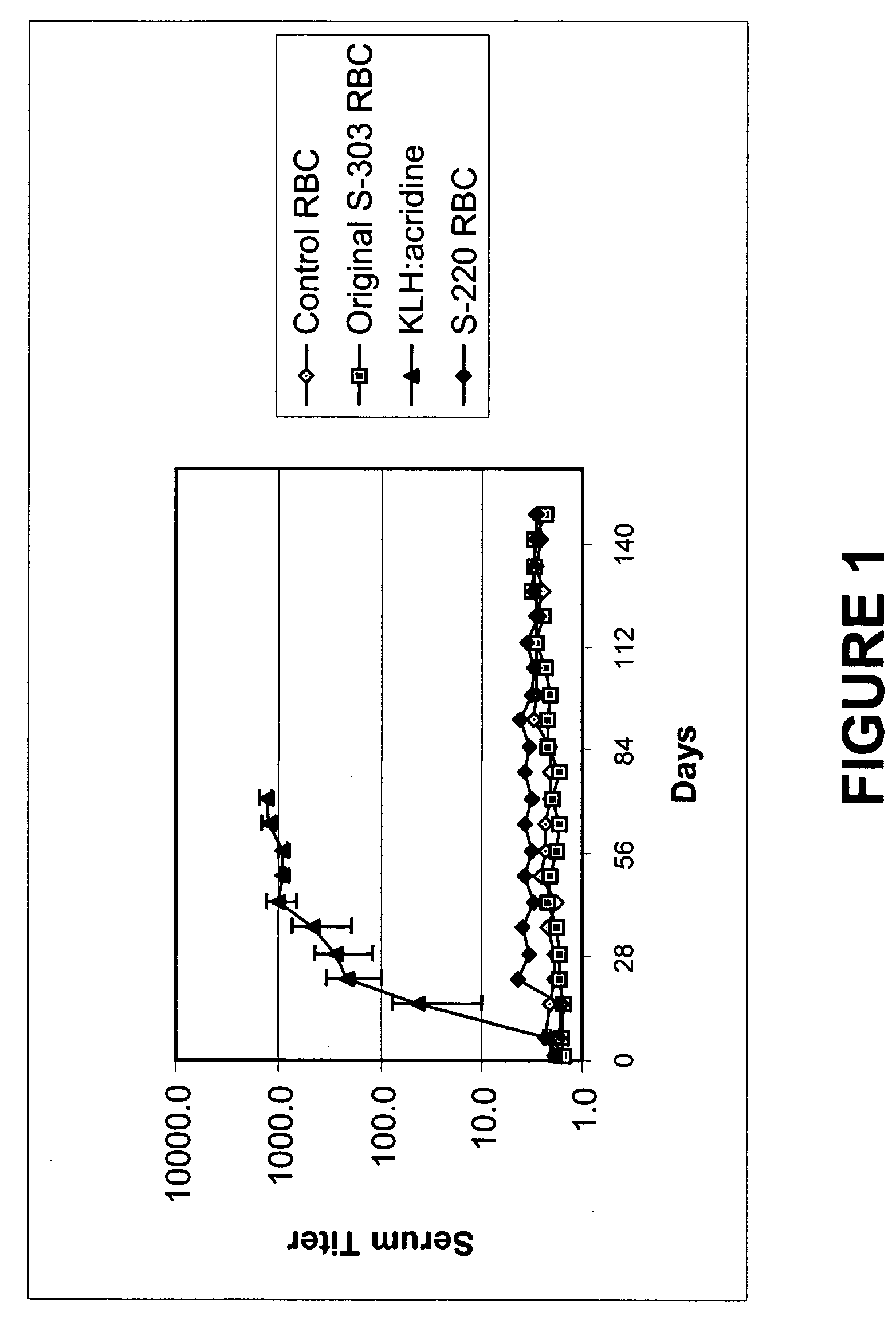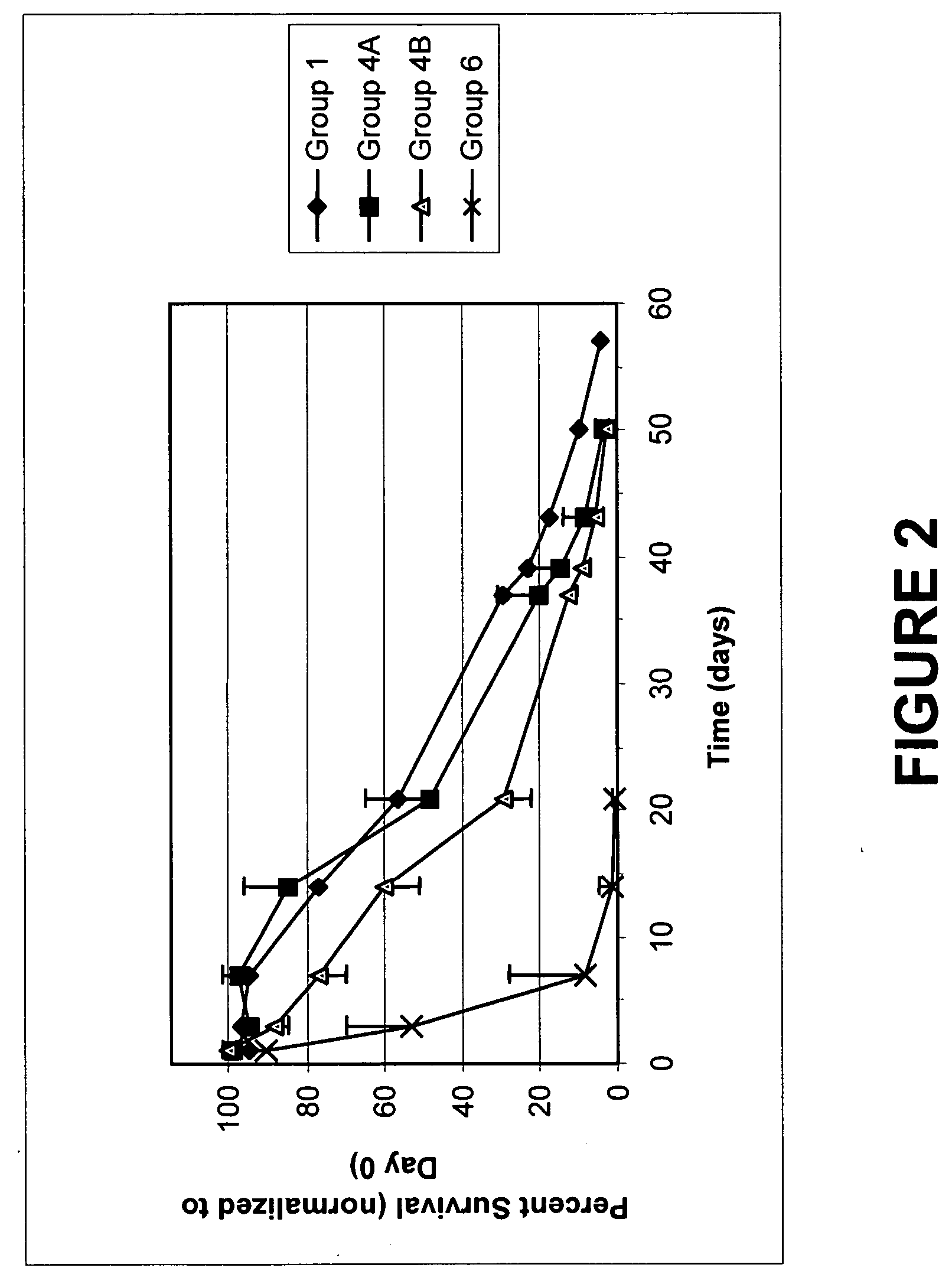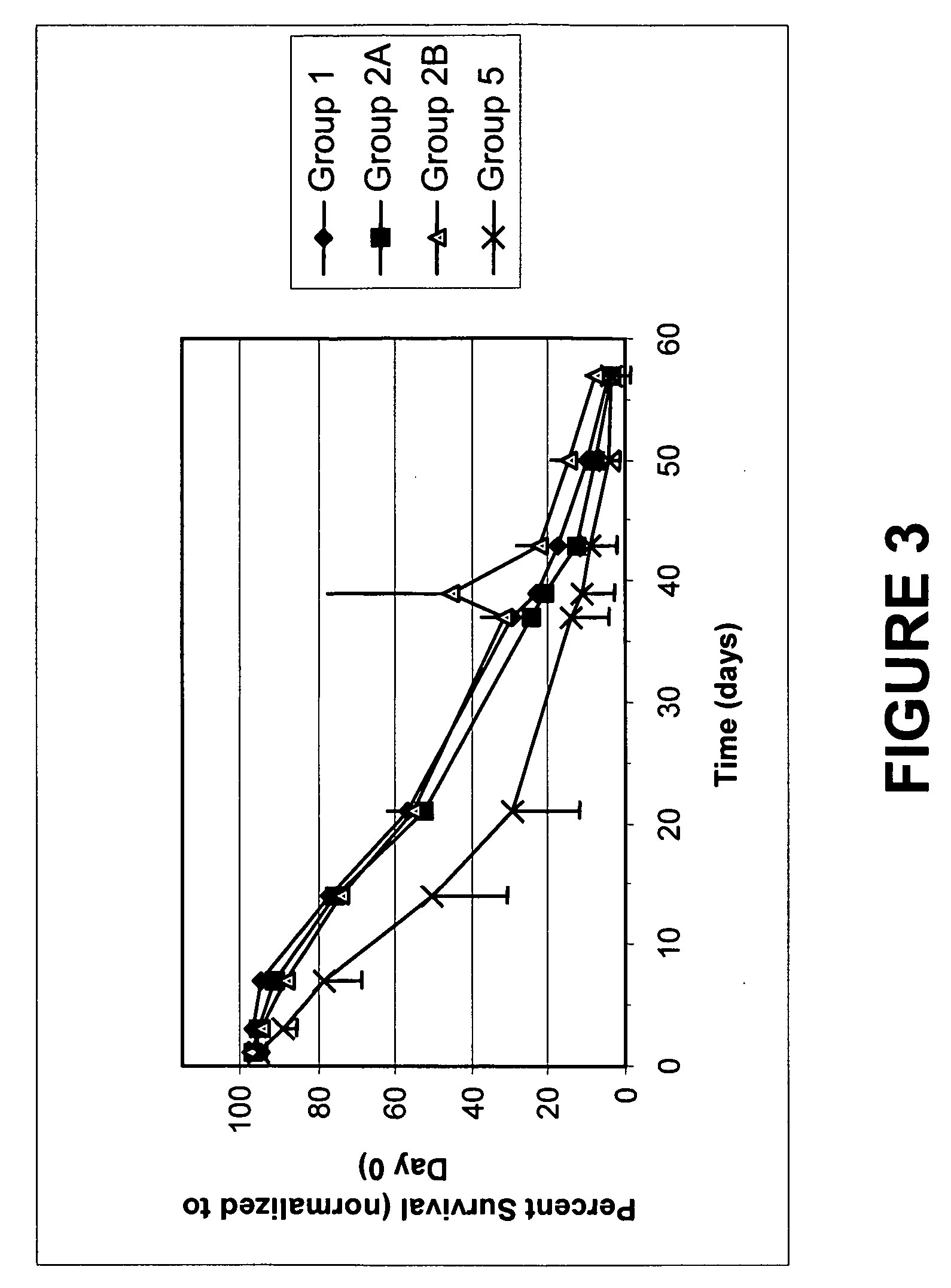Quenching methods for red blood cell inactivation process
- Summary
- Abstract
- Description
- Claims
- Application Information
AI Technical Summary
Benefits of technology
Problems solved by technology
Method used
Image
Examples
example 1
Comparison of Inactivation of Serratia marcescens, Staphylococcus epidermidis and Yersinia enterocolitica to Standard Conditions
[0095] The bacteria S. marcescens was grown overnight by addition of a single colony from a master plate to 500 mL of LB media at 37° C. The overnight culture was diluted 1:1000 in fresh media. The growth at 37° C. was monitored by the OD of the suspension at 600 nm. The preparation was used when the suspension reached 0.5 OD. Whole blood (Blood Source, Sacramento, Calif.) was used to prepare a red blood cell (RBC) composition by centrifuging to provide packed RBC (34 mL of approximately 90% hematocrit), then adding 17 mL Erythrosol to a hematocrit of approximately 60%. Erythrosol is a red blood cell additive (Baxter Healthcare Corp., Deerfield, Ill.) that may be prepared by combining sodium citrate dihydrate (7.82 g); sodium acid phosphate dihydrate (0.73 g); sodium phosphate dihydrate (3.03 g); adenine (0.22 g); mannitol (7.74 g); and glucose (9 g) in 1 ...
example 2
Comparison of Inactivation of Vesicular Stomatitis Virus (VSV) to Standard Conditions
[0104] A 100× stock of VSV (approximately 1.78×108 titer) is used to contaminate a red blood cell composition prepared as per Example 1. The contaminated RBC were treated as indicated in Table 5A-B, incubating for 2 hours. The components were added as shown for similar experiments described above. A volume of 5 mL contaminated RBC was treated for each sample. The RBC were frozen in liquid N2 after the end of the incubation and analyzed at a later time. The titer of VSV remaining was determined by plaque assay in African Green Monkey cells Vero 76, grown in EMEM supplemented with 10% fetal calf serum and other essential elements. The titer was calculated by determination of the number of plaques obtained upon application of diluted samples on confluent preparations of cells as previously published (Hsiung G D and Melnick J L, Journal of Immunology 78, 128-136. 1957) The results are shown in Table 6A...
example 3
Determination of PIC-1 Adduct Frequency on Human Leukocyte Genomic DNA after Treatment of RBC with PIC-1 and Glutathione or cysteine
[0106] Whole blood which had not been leukoreduced was used to prepare RBC in Erythrosol as described in Example 1. Aliquots of 20 mL each were treated either with 0.2 mM PIC-1, 0.2 mM PIC-1 and 2 mM acidic glutathione, 20 mM neutralized glutathione (2 equivalents of base), with PIC-1 added to 0.2 mM 10 minutes later, or 20 mM each of neutralized glutathione (2 equivalents of NaOH) and neutralized cysteine (1 equivalent of NaOH), with PIC-1 added to 0.2 mM 10 minutes later. The PIC-1 used included radiolabeled PIC-1, where the reactive group included a 14C label (ViTrax, Inc., Placentia, Calif.). The specific activity of the PIC-1 used was 1.08 μCi / pmole. All samples were incubated at room temperature for 20 hours. After the incubation, 20 mL of RBC were diluted with a 20 mL volume of PBS and 20 mL of the mixture were added to each of two tubes contain...
PUM
| Property | Measurement | Unit |
|---|---|---|
| Molar density | aaaaa | aaaaa |
| Molar density | aaaaa | aaaaa |
| Molar density | aaaaa | aaaaa |
Abstract
Description
Claims
Application Information
 Login to View More
Login to View More - R&D
- Intellectual Property
- Life Sciences
- Materials
- Tech Scout
- Unparalleled Data Quality
- Higher Quality Content
- 60% Fewer Hallucinations
Browse by: Latest US Patents, China's latest patents, Technical Efficacy Thesaurus, Application Domain, Technology Topic, Popular Technical Reports.
© 2025 PatSnap. All rights reserved.Legal|Privacy policy|Modern Slavery Act Transparency Statement|Sitemap|About US| Contact US: help@patsnap.com



